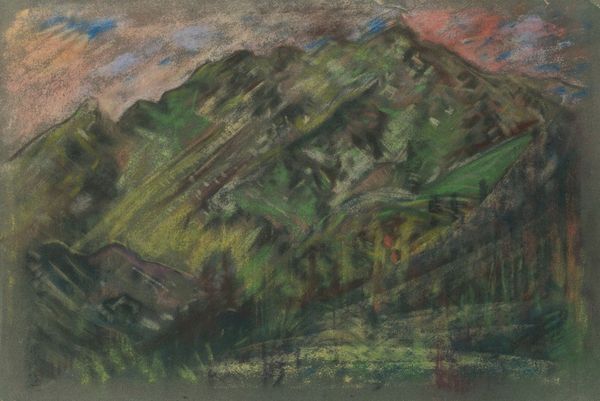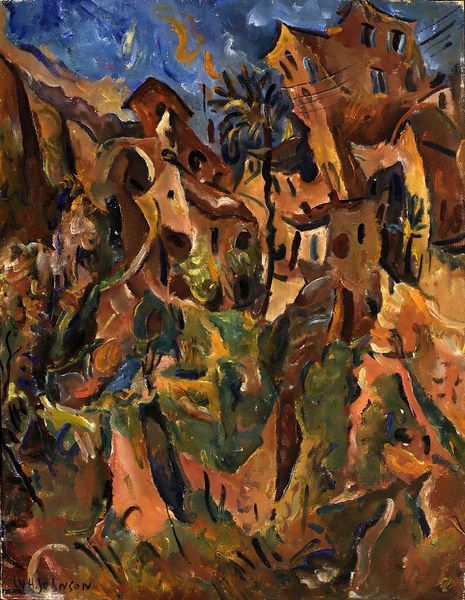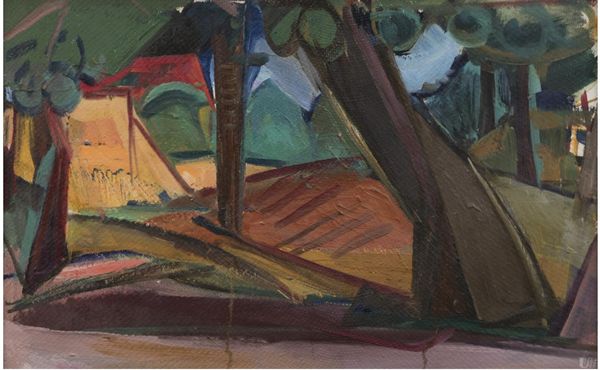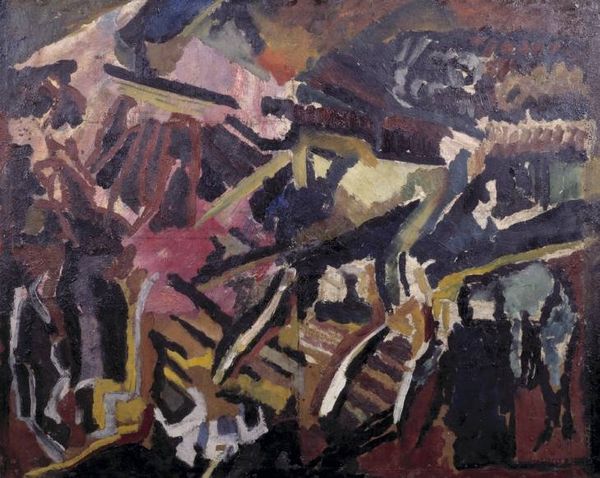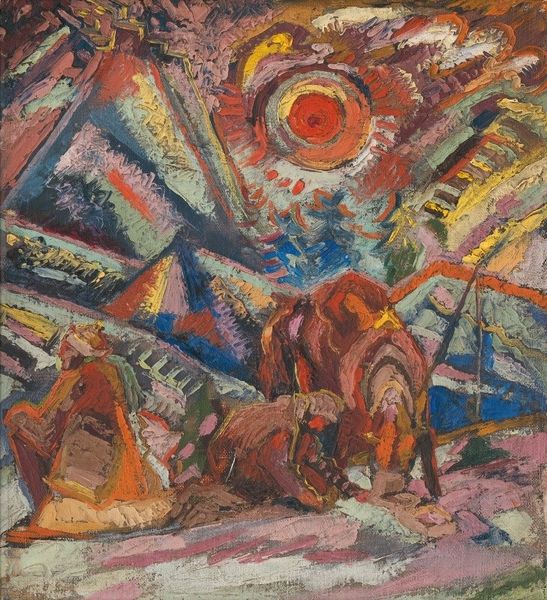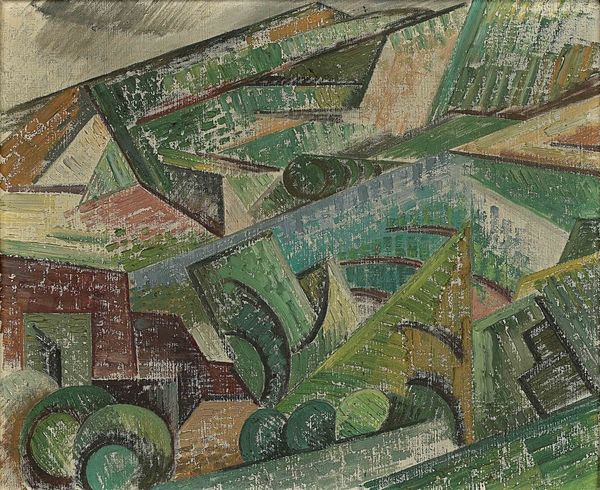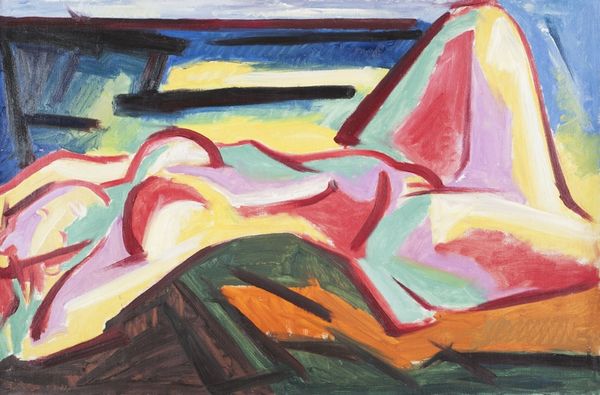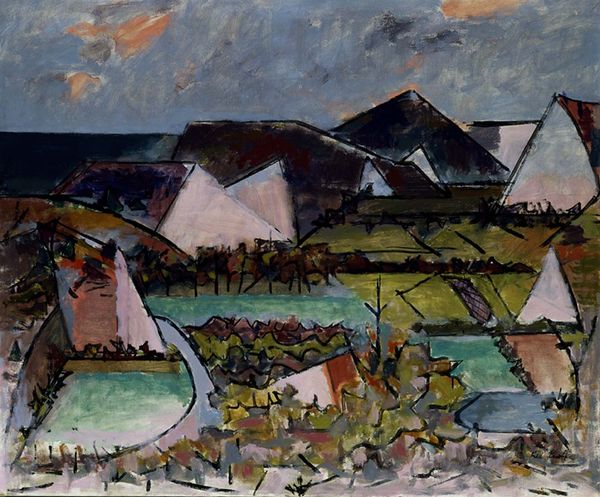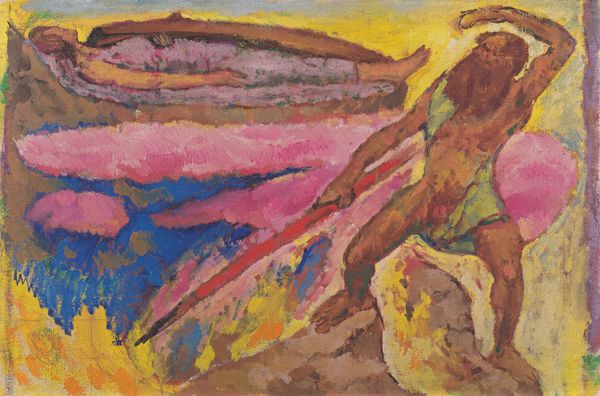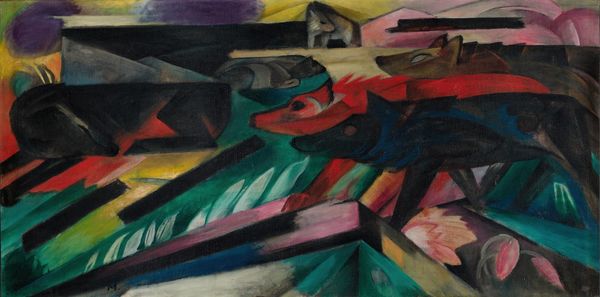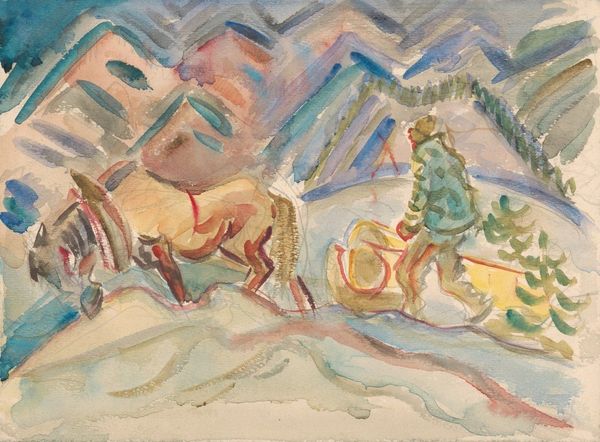
Copyright: Public Domain: Artvee
Curator: Looking at this piece, titled "Z Lužnej" from 1935 by Arnold Peter Weisz-Kubínčan, one immediately senses a somber, almost turbulent mood. The artist's Fauvist and Expressionist influences are unmistakable. Editor: That's the first thing I noticed too, the density of the earth tones – browns, greens, and ochres layered so thickly, as if the canvas itself is a compressed layer of soil and organic matter. It speaks of a raw, immediate engagement with the landscape's materiality. Curator: Precisely. Observe how Kubínčan employs swirly, impasto brushstrokes to build texture. The application of paint evokes a sense of dynamic movement within a still landscape, suggesting a deeper emotional engagement beyond mere representation. The composition, you'll note, draws the eye upward toward a prominent mountain under a clouded sky. Editor: Right, I’m interested in that relationship between the agricultural fields in the foreground, rendered with those horizontal paint applications that indicate rows of crops and the elevated mountaintop with its tiny, almost spectral figures. How would agricultural laborers interpret that positioning? Does it symbolize their connection, or perhaps detachment, from the broader landscape? Curator: That is a poignant interpretation. One could argue that these stylistic choices – the swirly, dynamic brushwork, the contrast between ground and sky, also reinforce a symbolic interplay between chaos and order, struggle and peace. The expressive distortions certainly invite an emotive, rather than strictly representational, reading. Editor: And consider the artist's hand here – we see it shaping and forming not only the scene but the very textures of lived experience. We know oil paint demands certain labor. Does that contribute to a reading of value in a work like this? Curator: Without question. Such considerations enrich our understanding of the artwork’s creation, reminding us that art is not born in a vacuum but emerges from specific conditions and creative choices. Editor: Looking more deeply through both the material and symbolic choices in Kubínčan's approach encourages me to reevaluate painting's position to the landscape. I feel grounded yet thoughtful, thanks to that balance. Curator: Indeed, and appreciating the stylistic nuances and their broader resonance allows a deeper, more nuanced understanding. A landscape is rarely just a pretty scene.
Comments
No comments
Be the first to comment and join the conversation on the ultimate creative platform.

